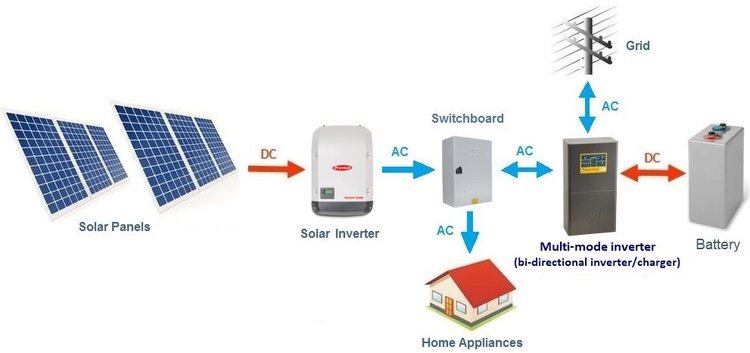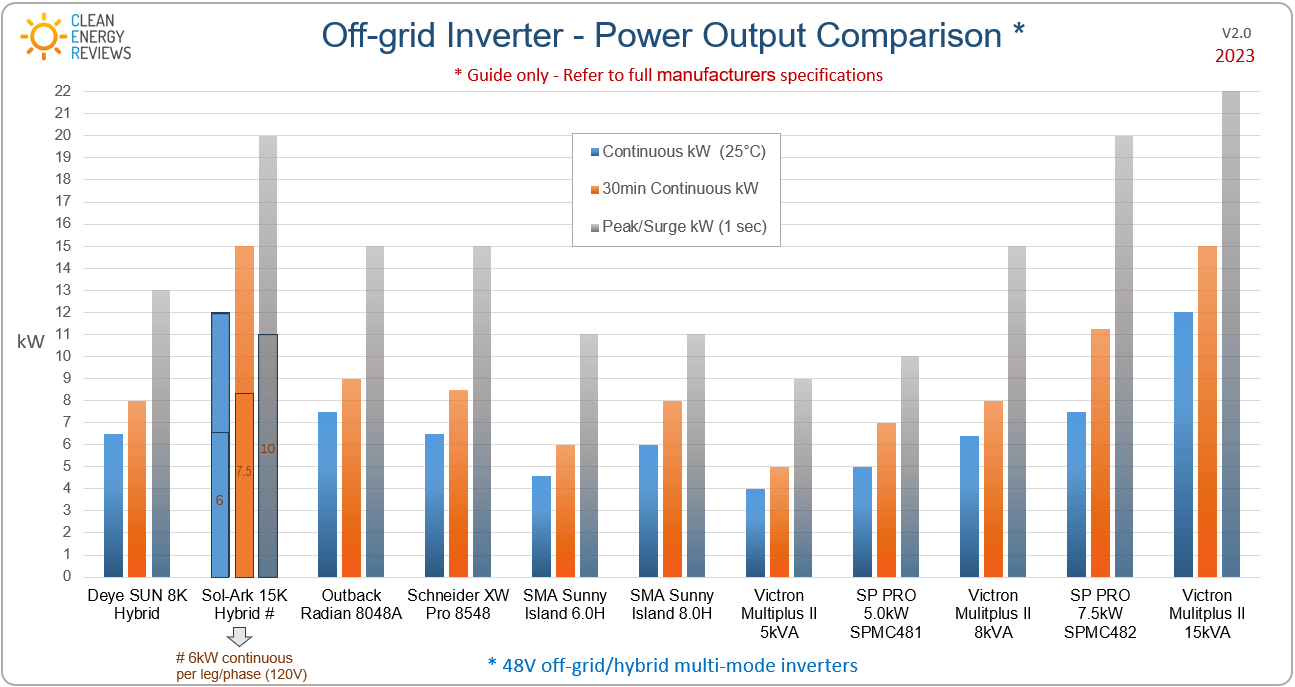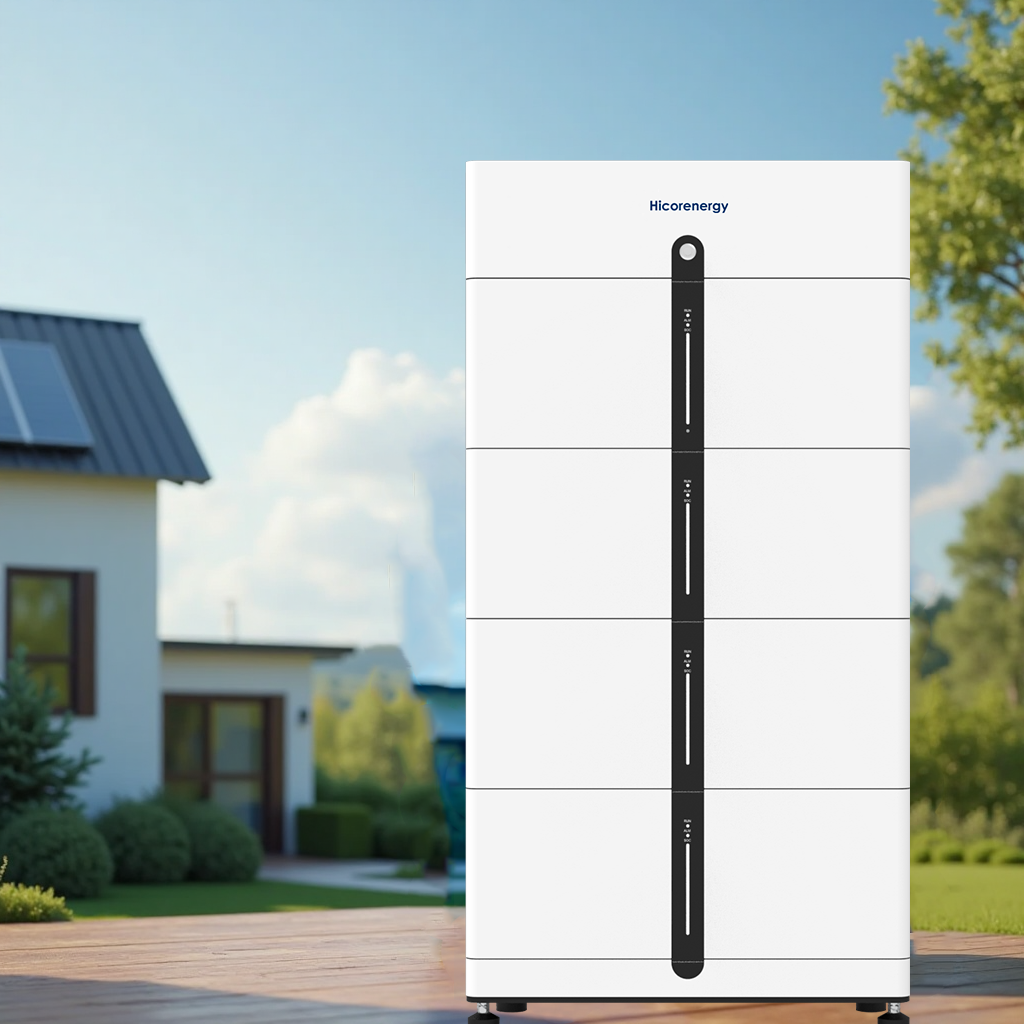As more homeowners and businesses transition to solar energy, the question of how to store that power efficiently becomes essential. What are the best battery storage options for solar panel systems in 2025, and how can you choose the right one to meet your energy needs?
Discover the best solar battery storage options in 2025 to boost energy savings, ensure reliable backup power, and enhance your solar system.
Smart inverters are revolutionizing solar energy storage. These intelligent devices optimize energy conversion, monitor performance in real time, and extend battery pack lifespan by ensuring balanced charging cycles. When combined with the right battery backup system, they maximize clean energy use and reduce dependency on grid-supplied electric power.
Want to save more on your electric bill and increase energy independence? Read on to discover your best battery storage options.

Table of Contents
Why Is Battery Storage Crucial for Solar Panel Systems in 2025?
Battery storage has become an essential part of solar panel systems, especially in 2025 as energy demands increase and electricity costs rise. While solar panels generate clean energy during the day, much of that power goes unused without a proper battery pack to store it. Battery backup solutions allow homeowners and businesses to capture excess energy and use it during peak demand hours or at night, significantly enhancing energy saving.
Moreover, battery storage adds resilience to your solar setup. With extreme weather events and grid outages becoming more frequent, having a battery backup ensures your electric power remains stable. This makes solar panel systems with integrated battery packs a reliable green energy solution. They reduce dependence on fossil fuels, promote new energy innovation, and make clean energy access consistent and uninterrupted.
Battery storage also enables users to benefit from time-of-use pricing and net metering programs. With strategic charging and discharging, energy costs are minimized, and surplus power can be sold back to the grid. This flexibility supports sustainable lifestyles and aligns with growing environmental goals for 2025 and beyond.
What Are the Top Battery Storage Technologies Available Today?
Several advanced battery storage technologies have emerged as the leading choices for solar panel systems in 2025. Each offers unique features based on energy needs, lifespan, cost, and efficiency:
1. Lithium-Ion Batteries: The most popular and efficient option for residential use. These batteries have a high energy density, long lifespan, and relatively compact size. They support rapid charging and discharging, making them ideal for daily cycling in solar systems.
2. Lithium Iron Phosphate (LiFePO4): A subtype of lithium-ion, these batteries offer improved safety, thermal stability, and longer life. Widely used in battery packs, they are a reliable choice for backup energy and clean energy storage.
3. Lead-Acid Batteries: Although older and bulkier, they remain a cost-effective option. They’re suitable for short-term backup but have shorter lifespans and require regular maintenance.
4. Flow Batteries: These use liquid electrolytes to store energy. Known for long-duration storage and scalability, flow batteries are promising for commercial or off-grid applications but still expensive for most residential users.
5. Solid-State Batteries: Emerging technology promising higher safety and energy capacity. While not yet mainstream, they are expected to redefine new energy storage by 2030.
Choosing the right technology depends on whether your priority is green power, power saving, or long-term scalability.

How Much Does Solar Battery Storage Cost in 2025?
The cost of solar battery storage in 2025 depends on battery type, system size, installation complexity, and available incentives. On average, residential battery systems cost between $8,000 and $18,000, including the battery pack, inverter, and labor.
Lithium-ion battery packs are the most commonly installed and can cost around $10,000 for a 10 kWh system. Lead-acid batteries, though cheaper upfront, incur higher maintenance costs and may need more frequent replacement. Flow batteries and solid-state options are premium solutions with higher upfront investment but better long-term returns in energy saving and performance.
Governments continue to offer tax credits and rebates for green energy adoption. The U.S. federal Investment Tax Credit (ITC) allows homeowners to deduct a significant portion of solar and storage installation costs from their taxes. Many states also offer additional incentives that make battery storage systems more accessible.
Long-term, solar battery storage leads to notable cost reductions in electric power bills. With time-of-use pricing, users can store energy when rates are low and use it during expensive peak hours, reinforcing the value of investing in renewable energy storage.
How to Choose the Right Battery Storage System for Your Home
Selecting the ideal battery storage system involves more than just comparing price tags. Here are key considerations:
1. Energy Needs: Assess your average daily energy use to determine the required battery capacity. A 10–15 kWh battery pack typically suffices for most households.
2. Compatibility: Ensure the battery system is compatible with your current or planned solar panel setup. AC- and DC-coupled systems offer different advantages in flexibility and efficiency.
3. Efficiency and Depth of Discharge (DoD): Look for high DoD ratings, which indicate more usable battery capacity. Efficiency rates above 90% are ideal for maximizing power saving.
4. Lifespan and Warranty: Choose batteries with a longer cycle life and at least a 10-year warranty. Reliable battery backup systems will continue delivering clean energy throughout their lifecycle.
5. Smart Features: Opt for systems that integrate with smart home technologies or have built-in monitoring apps. This enhances control, diagnostics, and energy-saving strategies.
6. Budget and Incentives: Balance initial cost against potential savings, maintenance needs, and eligibility for financial incentives promoting renewable energy.
Choosing a battery storage system tailored to your needs ensures continuous access to green power while increasing energy independence.

Installation Tips and Maintenance for Solar Battery Storage
Installing solar battery storage requires professional assessment and careful planning. Begin by evaluating your electrical load and determining the ideal placement for the battery pack—preferably in a cool, dry, and ventilated area to extend lifespan.
Work with certified solar installers who can assess compatibility with your inverter, panel system, and utility grid requirements. Proper wiring, safety disconnects, and code-compliant setup are critical for long-term reliability and efficiency.
Maintenance Tips:
- Keep the battery pack clean and dust-free.
- Monitor battery performance through a mobile app or inverter dashboard.
- Schedule periodic inspections for firmware updates, cable integrity, and system diagnostics.
- Avoid overcharging or deep discharging beyond recommended limits to preserve battery life.
If using lead-acid batteries, regularly check electrolyte levels and ventilation. Lithium-ion and newer battery backup systems require minimal upkeep but still benefit from annual checkups.
Ultimately, a well-installed and maintained solar battery storage system delivers uninterrupted backup energy, lowers electricity costs, and supports your transition to clean energy and power saving.
Conclusion
Choose the right battery pack to unlock full clean energy potential—contact us today for expert advice and custom solutions.

-scaled.png)
